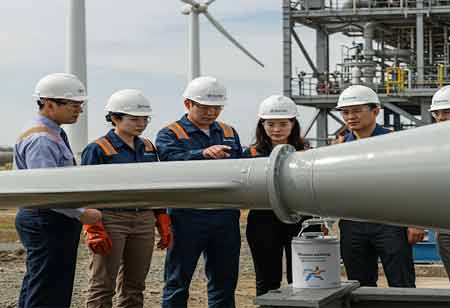Thank you for Subscribing to Construction Business Review Weekly Brief
Specials
- Apartment and Condominium Contractors Canada
- Decking Canada
- Architectural Glass Europe
- MEP APAC
- Construction Saudi Arabia
- German Apartment and Condominium Contractors
- Construction Law APAC
- Outdoor Construction
- Foundation Construction Canada
- MEP Canada
- Kitchen and Bath
- Cold Storage Construction APAC
- Precast Concrete Europe
- Construction Staffing Europe
- Pre-Construction Services
- Flooring System APAC
- Scaffolding Canada
- Swimming Pool Construction Canada
- Construction Management Canada
- Cold Storage Construction Canada
- Flooring Systems Europe
- Residential Construction
- Concrete Canada
- Construction Cladding Europe
- Construction Cladding APAC
- Concretes, Aggregates and Construction Materials APAC
- Concretes, Aggregates and Construction Materials Europe
- Commercial Contractors Europe
- Commercial Contractors APAC
- Dummy
- Construction Insulation, Coating and Waterproofing
- Construction Management APAC
- Landscaping Canada
- Construction Coating Europe
- Construction Tech Startups Europe
- Insulation Services Europe
- Mechanical Contractor Canada
- Mould Remediation and Testing Europe
- Swimming Pool Construction APAC
- Building Sealing Solutions Europe
- Construction Engineering Services
- Mechanical Electrical and Plumbing
- Roofing Systems Europe
- Architectural Glass APAC
- Startups APAC
- Construction Forensic and Owners Representative
- Flooring System
- Waterproofing APAC
- Wall Systems
- Safety and Compliance Europe
- Construction Equipment
- Modular and Prefab Construction
- Architectural Glass
- Construction MENA
- Construction Demolition and Recycling Europe
- Modular Construction Europe
- Construction Interiors
- Steel Building APAC
- HVAC
- Doors and windows
- Modular Construction APAC
- Building Information Modeling APAC
- Sustainable Construction APAC
- Building Restoration and Maintenance
- Commercial Contractors
- Specialty Construction
- Construction Engineering Canada
- Construction Engineering MENA
- Modular Construction Canada
- Construction Demolition Canada
- Roofing and Siding Systems
- Construction Latam
- Construction Staffing
- Roofing Systems APAC
- Construction Consulting
- Steel Building Europe
- Construction Demolition and Recycling APAC
- Safety and Compliance APAC
- Concretes, Aggregates and Construction Materials
- Construction Cladding
Tackling the Labor Shortage in the Middle East Construction Sector
Industry analysts have projected that digitisation alone could provide an annual value of $1.6 trillion in the construction sector, highlighting the potential for large economic gains. This demonstrates the enormous potential artificial intell

By
Construction Business Review | Tuesday, January 16, 2024
Stay ahead of the industry with exclusive feature stories on the top companies, expert insights and the latest news delivered straight to your inbox. Subscribe today.
Leveraging AI, digitisation addresses Middle East construction's labour shortage, promising transformative solutions for sustainable growth and operational efficiency.
FREMONT, CA: Industry analysts have projected that digitisation alone could provide an annual value of $1.6 trillion in the construction sector, highlighting the potential for large economic gains. This demonstrates the enormous potential artificial intelligence (AI) has for building. Based on projections, the AI construction market is expected to generate $2,642.4 million in revenue by 2026, with a noteworthy compound yearly growth rate of 26.3 per cent from 2019 to 2026. It is projected that ongoing developments in AI and the Internet of Things will open up new doors for expansion and innovation in the engineering and construction sectors.
Investigating how automation, machine learning, ML, and AI can play critical roles in changing construction methods as the sector enters a significant revolutionary period is critical. These technologies present viable answers to problems like the need for operational efficiency and labour scarcity.
The Labour Shortage Crisis
To fulfil demand, the construction industry will need nearly two million workers over the next three years, resulting in a serious labour shortage. Construction project delays result from post-pandemic global supply chain problems, which exacerbate these obstacles.
Upskilling and reskilling become essential to preparing the workforce for the rising demand and possible manpower shortage. To ensure that employees are prepared to meet the changing needs of the industry, training programmes and educational initiatives must give them the skills they need.
Project and Fleet Management
First of all, by taking care of monotonous jobs like asset management and bidding, automation technologies can simplify project management. Both of these factors lower the total number of workers required for a project, relieving some of the strain on a workforce already operating at capacity.
Construction project planning and design have also entered a new phase with the AI-driven fleet management software. Large volumes of data on site characteristics, historical documents, and architectural requirements can be evaluated using sophisticated algorithms to provide optimal design plans. Construction projects that are both affordable and sustainable are the outcome of this design process acceleration. Furthermore, AI-driven building information modelling systems (BIMs) enable contractors, engineers, and architects to collaborate in real time. By identifying and fixing design flaws before they worsen during construction, these technologies help to minimise project delays and cost overruns.





